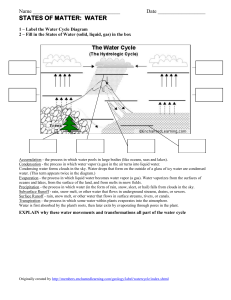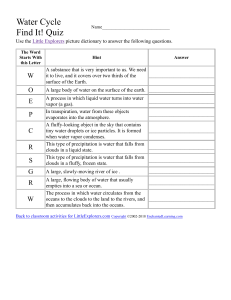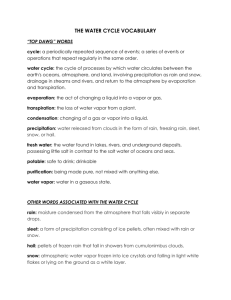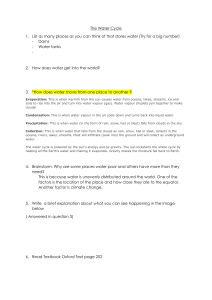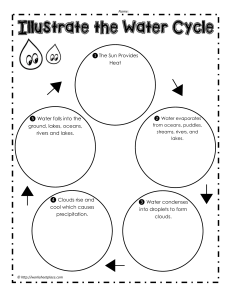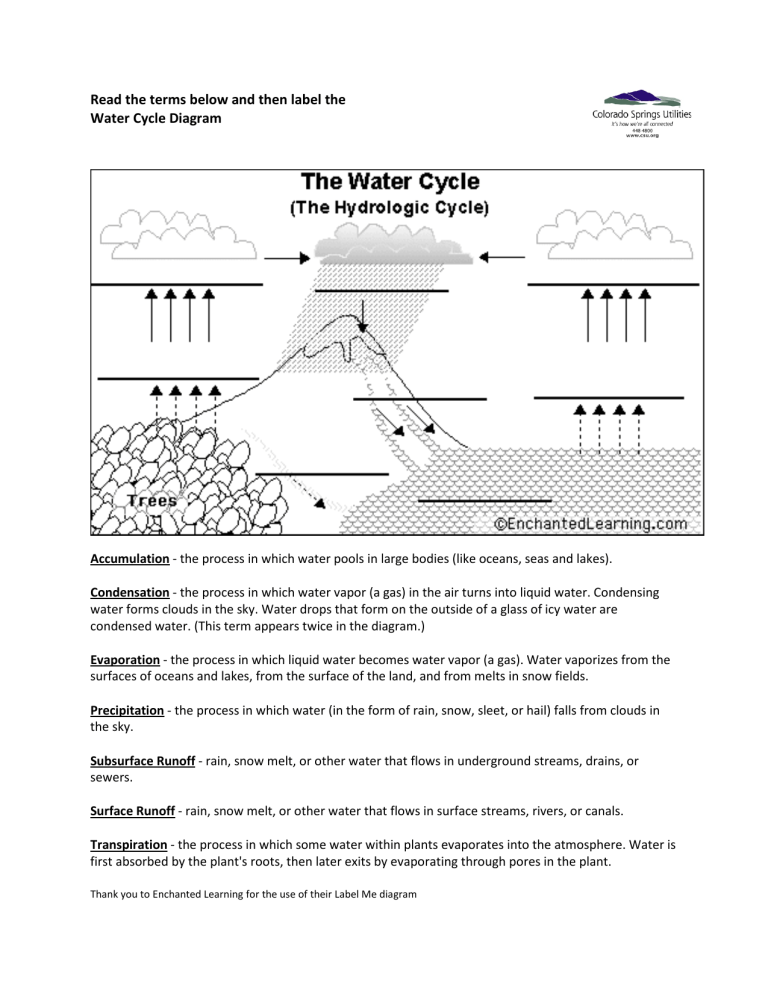
Read the terms below and then label the Water Cycle Diagram Accumulation - the process in which water pools in large bodies (like oceans, seas and lakes). Condensation - the process in which water vapor (a gas) in the air turns into liquid water. Condensing water forms clouds in the sky. Water drops that form on the outside of a glass of icy water are condensed water. (This term appears twice in the diagram.) Evaporation - the process in which liquid water becomes water vapor (a gas). Water vaporizes from the surfaces of oceans and lakes, from the surface of the land, and from melts in snow fields. Precipitation - the process in which water (in the form of rain, snow, sleet, or hail) falls from clouds in the sky. Subsurface Runoff - rain, snow melt, or other water that flows in underground streams, drains, or sewers. Surface Runoff - rain, snow melt, or other water that flows in surface streams, rivers, or canals. Transpiration - the process in which some water within plants evaporates into the atmosphere. Water is first absorbed by the plant's roots, then later exits by evaporating through pores in the plant. Thank you to Enchanted Learning for the use of their Label Me diagram Answer Key: The Water Cycle (also known as the hydrologic cycle) is the journey water takes as it circulates from the land to the sky and back again. The Sun's heat provides energy to evaporate water from the Earth's surface (oceans, lakes, etc.). Plants also lose water to the air (this is called transpiration). The water vapor eventually condenses, forming tiny droplets in clouds. When the clouds meet cool air over land, precipitation (rain, sleet, or snow) is triggered, and water returns to the land (or sea). Some of the precipitation soaks into the ground. Some of the underground water is trapped between rock or clay layers; this is called groundwater. But most of the water flows downhill as runoff (above ground or underground), eventually returning to the seas as slightly salty water.
